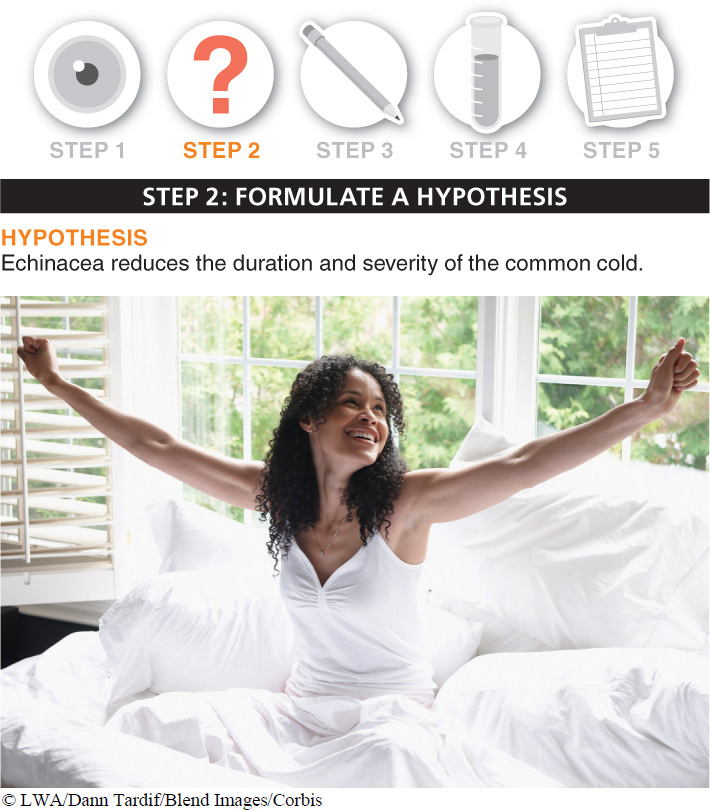Based on observations, we can develop a hypothesis (pl. hypotheses), a proposed explanation for observed phenomena. What hypotheses could we make about the eyewitness-
To be most useful, a hypothesis must accomplish two things.
- 1. It must establish an alternative explanation for a phenomenon. That is, it must be clear that if the proposed explanation is not supported by evidence or further observations, a different hypothesis is a more likely explanation.
- 2. It must generate testable predictions (FIGURE 1-9). This characteristic is important because we can evaluate the validity of a hypothesis only by putting it to the test. For example, we could disprove the “Eyewitness testimony is always accurate” hypothesis by demonstrating that, in certain circumstances, individuals who have witnessed a crime might misidentify someone as the criminal when asked to select the suspect from a lineup.
 Figure 1-9Hypothesis: the proposed explanation for a phenomenon.
Figure 1-9Hypothesis: the proposed explanation for a phenomenon.
Researchers often pose a hypothesis as a negative statement, proposing that there is no relationship between two factors, such as “Echinacea has no effect on the duration and severity of cold symptoms.” Or “There is no difference in the coarseness or darkness of hair that grows after shaving.” A hypothesis that states a lack of relationship between two factors is called a null hypothesis. Both types of hypothesis are equally valid, but a null hypothesis is easier to disprove. This is because a single piece of evidence or a single new observation that contradicts a null hypothesis is sufficient for us to reject it and conclude that an alternative hypothesis must be considered. So, once you have one piece of solid evidence that your null hypothesis is not true, you gain little by collecting further data. Conversely, it is impossible to prove that a hypothesis is absolutely and permanently true: all evidence or further observations that support a hypothesis are valuable, but they do not rule out the possibility that some future evidence or observation might show that the hypothesis is not true. They simply give us more confidence about our hypothesis.
10
“Scientific issues permeate the law. I believe [that] in this age of science we must build legal foundations that are sound in science as well as in law. The result, in my view, will further not only the interests of truth but also those of justice.”
— U.S. SUPREME COURT JUSTICE STEPHEN BREYER, at the annual meeting of the American Association for the Advancement of Science, February 1998
For our two additional observations, we could state each of our hypotheses in two different ways:
Hypothesis: Echinacea reduces the duration and severity of the symptoms of the common cold.
Null hypothesis: Echinacea has no effect on the duration or severity of the symptoms of the common cold.
Hypothesis: Hair that is shaved grows back coarser and darker.
Null hypothesis: There is no difference in the coarseness or color of hair that is shaved relative to hair that is not shaved.
TAKE-HOME MESSAGE 1.6
A hypothesis is a proposed explanation for an observed phenomenon.
What are the characteristics of a scientifically useful hypothesis?
A useful hypothesis must establish mutually exclusive alternative explanations for a phenomenon and must generate testable predictions.